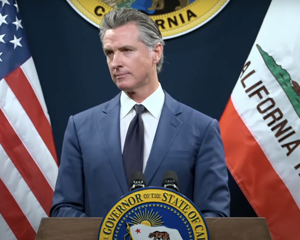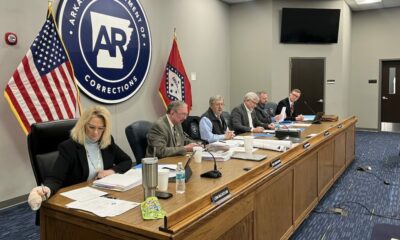Kaiser Health News
Giant Health System Almost Saved a Community Hospital. Now, It Wants to ‘Extract Every Dollar.’
by Bernard J. Wolfson and Melissa Montalvo, The Fresno Bee
Fri, 21 Jul 2023 18:00:00 +0000
For most of last year, St. Agnes Medical Center, based in Fresno, California, looked like a white knight poised to rescue smaller Madera Community Hospital from financial ruin.
Now, with the nonprofit Madera, California, hospital bankrupt and shuttered, St. Agnes looms as a dark knight, pushing to liquidate the hospital to get a loan it made to Madera paid back — even if that means dashing the hopes of the community activists, political leaders, and health care officials that the hospital can still reopen.
A pivotal moment in the case could come July 25, when a bankruptcy judge in Fresno will hear arguments on whether the Madera hospital should be allowed to spend its dwindling cash reserves on things such as building maintenance, security, utilities, and the salaries of its three top executives.
The hospital wants to run a skeletal operation while it seeks a buyer and develops a reopening plan. But the federal bankruptcy court in Fresno has authorized it to spend money only through July 29. If the judge doesn’t think the hospital has a viable plan, he may refuse an extension, which would likely mean liquidation.
Problems like Madera’s are common among other small, financially challenged hospitals in California and nationwide. They typically have low patient volumes and rely disproportionately on payments from Medicaid and Medicare, which constrains revenue and makes it difficult to attract talent or invest in cutting-edge equipment. Add to the mix a crushing surge in expenses stemming from the covid-19 pandemic, and dozens of such facilities are struggling to survive. Two others, both in California, have filed for bankruptcy this year.
Yet Madera had problems that were all of its own making. The hospital made money on patients insured by Medi-Cal, the state safety-net insurance program that pays notoriously low rates, according to financial data filed with state regulators. But it lost money on its commercially insured patients due to low volume and bad deals with insurance providers. It also failed to seek covid relief funds in a timely manner. A state hospital bailout fund came too late.
Plus, Madera had no backup plan when St. Agnes and its parent company, the hospital chain Trinity Health, walked away from a proposed merger with the troubled hospital late last year, giving virtually no notice and scant explanation. Their move shocked and infuriated officials, former employees, and community advocates in Madera and Sacramento.
In a brief December press release, St. Agnes and Trinity blamed their decision on “complex circumstances” and “additional conditions” imposed by state Attorney General Rob Bonta. But industry experts said Bonta had agreed to most of what St. Agnes asked for and were baffled as to why they walked away from the deal.
The spectacle of St. Agnes and Trinity now pushing in court for the liquidation of tiny Madera has drawn Bonta’s ire.
“For Trinity, it was always about profit, not the health of the Madera community,” Bonta told KFF Health News in a statement. “They are now attempting to use their position as Madera’s biggest creditor to extract every dollar possible, instead of keeping the community’s interests at heart.”
Bonta said his office had “offered maximum flexibility to Trinity in recognition of Madera’s financial circumstances.”
An agricultural area of 2,150 square miles and home to nearly 160,000 people, Madera County is 60% Hispanic, and more than one-fifth of its residents live below the poverty line, according to census data.
A Community Left in the Lurch
Jennifer Lara, a former Madera Community Hospital nursing assistant, said she and colleagues had been looking forward to positive change after the anticipated merger with St. Agnes. “We were floored when we found out the hospital was closing,” she said. “We didn’t think anything other than the hospital continuing on was going to happen.”
St. Agnes and Trinity declined to comment. The longtime CEO of St. Agnes, Nancy Hollingsworth, retired in May amid a reorganization that made the hospital part of a regional group based in Idaho. It’s unclear whether her departure was related to the collapse of the Madera deal. Hollingsworth could not be reached for comment.
St. Agnes’ considerable leverage in the bankruptcy case is the result of a $15.4 million loan it extended to Madera during merger talks last year. Madera has since repaid $8 million, leaving a debt of over $7 million, which still makes St. Agnes its largest creditor.
St. Agnes, one of 88 hospitals belonging to Trinity, a multistate, Catholic, nonprofit health system headquartered in Livonia, Michigan, argued in a recent bankruptcy court filing that Madera still has made no significant progress finding a buyer, more than four months after filing for Chapter 11 bankruptcy protection on March 10, and should not be allowed to continue spending money “without a serious path forward to either sell or mothball the hospital.”
The hospital has been talking to three potential partners, “one of whom is late to the game,” said Riley Walter, Madera’s bankruptcy lawyer.
Mohammad Ashraf, a cardiologist and member of the executive committee of Madera’s medical staff, said the first two entities in question, whom he declined to identify, are management service organizations, not hospital groups. “They don’t want to spend any money to buy it. They just want to run it,” he said.
Without a convincing strategy for the future of Madera Community Hospital, the end of the bankruptcy case could come quickly.
Ranjit S. Rajpal, a Madera cardiologist for over 40 years, said the closure of the hospital is bad news for patients who need time-sensitive care, such as for heart attacks, strokes, or other traumas, and who now must travel greater distances to get it.
And the closure will exacerbate existing health inequities for people who face challenges getting care because of immigration status, language barriers, lack of transportation, or other socioeconomic factors, he said. “Those disparities will be compounded as time goes by.”
Community leaders and the hospital’s leadership hold out hope for reopening. The hospital has applied for $80 million from California’s new, $300 million loan fund for distressed hospitals. Hospital leaders must produce a reopening plan by July 31, but even if it does, it’s unlikely to get the full requested amount: Sixteen hospitals have already applied for loans totaling over $385 million, said Joe DeAnda, spokesperson for the California State Treasurer’s Office.
“They’re not going to give a quarter of their total fund to one hospital that doesn’t even have a partner,” said Glenn Melnick, a health economist at the University of Southern California who authored an analysis commissioned by the AG’s office of the proposed St. Agnes-Madera merger. “Eighteen months ago, the ask would have been a lot smaller.”
Even if Madera Community Hospital finds a viable partner and gets the funding it needs, reopening would be daunting and expensive. The hospital would need to hire hundreds of nurses, technicians, and other staffers in a tight and expensive health care labor market and find a way to avoid the financial problems that landed it in bankruptcy.
“Some things an acute care hospital offers are profitable, and others are not,” said Jay Varney, Madera County’s administrative officer, whose role is akin to a CEO. “It doesn’t make much sense to have it reopen like it was and have it go bankrupt again.”
‘Running Out of Time’
Reopening the facility with all the services it provided before is not the only option. Baldwin Moy, an attorney for California Rural Legal Assistance, a community advocacy group, said he and colleagues have been arguing for the court to allow Madera additional time either to find a buyer or for the county “to put together a package that can reopen the emergency room with some stripped-down clinical operation.” But, Moy said, they are “running out of time.”
Karen Paolinelli, the hospital’s CEO, said the current suitors are interested in reopening it as an acute care facility that “may or may not have all services that were previously offered by Madera Hospital on day one.”
If the hospital can hold out for a few more months, it says, it can collect $23.5 million owed by the state for “provider fees,” and possibly an additional $10 million from the Federal Emergency Management Agency. Those payments would more than cover the hospital’s entire debt of $30 million. But the amount and timing of payments are unclear.
Paolinelli, voicing a common industry complaint, said the hospital has a disproportionately high number of Medi-Cal patients and Medi-Cal rates do not cover the cost of providing care. But state data shows that Madera received enough supplemental payments to earn nearly $15 million from Medi-Cal in 2021, though it lost over $11 million treating Medicare patients. Madera also lost about $6.8 million on commercially insured patients in 2021, the state data shows. Commercial insurance payments covered only 59.5% of what it cost to care for those patients. That compares with a statewide average of 156%, according to Melnick.
Paolinelli said Madera tried to negotiate better rates with commercial health plans but “does not have much leverage with the payors.” She added that many residents of Madera who get commercial insurance through their employers choose Kaiser Permanente, whose nearest acute care hospital is in Fresno, 20 miles away.
State Democratic Sen. Anna Caballero, whose district includes parts of Madera, Merced, and Fresno counties, said that if Madera Community Hospital were to successfully reopen, more people with commercial insurance would have to choose it over other hospitals outside the county, which they had not been doing frequently.
“The county and the city may need to say, ‘If you need hospitalization, you need to go to Madera, and there will be no copay, but if you go out of the county, there’s a copay you have to pay,’” Caballero said.
But with no clear path to reopening yet in sight, Caballero said, that discussion is premature.
Melissa Montalvo covers Latino communities for The Fresno Bee as part of the Central Valley News Collaborative, a partnership that includes The Fresno Bee, Vida en el Valle, Valley Public Radio, and Radio Bilingüe. This article is part of the Central Valley News Collaborative, which is supported by the Central Valley Community Foundation with technology and training support from Microsoft Corp.
By: Bernard J. Wolfson and Melissa Montalvo, The Fresno Bee
Title: Giant Health System Almost Saved a Community Hospital. Now, It Wants to ‘Extract Every Dollar.’
Sourced From: kffhealthnews.org/news/article/madera-hospital-bankruptcy-merger-rescue-liquidation-trinity-health/
Published Date: Fri, 21 Jul 2023 18:00:00 +0000
Kaiser Health News
US Judge Names Receiver To Take Over California Prisons’ Mental Health Program
SACRAMENTO, Calif. — A judge has initiated a federal court takeover of California’s troubled prison mental health system by naming the former head of the Federal Bureau of Prisons to serve as receiver, giving her four months to craft a plan to provide adequate care for tens of thousands of prisoners with serious mental illness.
Senior U.S. District Judge Kimberly Mueller issued her order March 19, identifying Colette Peters as the nominated receiver. Peters, who was Oregon’s first female corrections director and known as a reformer, ran the scandal-plagued federal prison system for 30 months until President Donald Trump took office in January. During her tenure, she closed a women’s prison in Dublin, east of Oakland, that had become known as the “rape club.”
Michael Bien, who represents prisoners with mental illness in the long-running prison lawsuit, said Peters is a good choice. Bien said Peters’ time in Oregon and Washington, D.C., showed that she “kind of buys into the fact that there are things we can do better in the American system.”
“We took strong objection to many things that happened under her tenure at the BOP, but I do think that this is a different job and she’s capable of doing it,” said Bien, whose firm also represents women who were housed at the shuttered federal women’s prison.
California corrections officials called Peters “highly qualified” in a statement, while Gov. Gavin Newsom’s office did not immediately comment. Mueller gave the parties until March 28 to show cause why Peters should not be appointed.
Peters is not talking to the media at this time, Bien said. The judge said Peters is to be paid $400,000 a year, prorated for the four-month period.
About 34,000 people incarcerated in California prisons have been diagnosed with serious mental illnesses, representing more than a third of California’s prison population, who face harm because of the state’s noncompliance, Mueller said.
Appointing a receiver is a rare step taken when federal judges feel they have exhausted other options. A receiver took control of Alabama’s correctional system in 1976, and they have otherwise been used to govern prisons and jails only about a dozen times, mostly to combat poor conditions caused by overcrowding. Attorneys representing inmates in Arizona have asked a judge to take over prison health care there.
Mueller’s appointment of a receiver comes nearly 20 years after a different federal judge seized control of California’s prison medical system and installed a receiver, currently J. Clark Kelso, with broad powers to hire, fire, and spend the state’s money.
California officials initially said in August that they would not oppose a receivership for the mental health program provided that the receiver was also Kelso, saying then that federal control “has successfully transformed medical care” in California prisons. But Kelso withdrew from consideration in September, as did two subsequent candidates. Kelso said he could not act “zealously and with fidelity as receiver in both cases.”
Both cases have been running for so long that they are now overseen by a second generation of judges. The original federal judges, in a legal battle that reached the U.S. Supreme Court, more than a decade ago forced California to significantly reduce prison crowding in a bid to improve medical and mental health care for incarcerated people.
State officials in court filings defended their improvements over the decades. Prisoners’ attorneys countered that treatment remains poor, as evidenced in part by the system’s record-high suicide rate, topping 31 suicides per 100,000 prisoners, nearly double that in federal prisons.
“More than a quarter of the 30 class-members who died by suicide in 2023 received inadequate care because of understaffing,” prisoners’ attorneys wrote in January, citing the prison system’s own analysis. One prisoner did not receive mental health appointments for seven months “before he hanged himself with a bedsheet.”
They argued that the November passage of a ballot measure increasing criminal penalties for some drug and theft crimes is likely to increase the prison population and worsen staffing shortages.
California officials argued in January that Mueller isn’t legally justified in appointing a receiver because “progress has been slow at times but it has not stalled.”
Mueller has countered that she had no choice but to appoint an outside professional to run the prisons’ mental health program, given officials’ intransigence even after she held top officials in contempt of court and levied fines topping $110 million in June. Those extreme actions, she said, only triggered more delays.
The 9th U.S. Circuit Court of Appeals on March 19 upheld Mueller’s contempt ruling but said she didn’t sufficiently justify calculating the fines by doubling the state’s monthly salary savings from understaffing prisons. It upheld the fines to the extent that they reflect the state’s actual salary savings but sent the case back to Mueller to justify any higher penalty.
Mueller had been set to begin additional civil contempt proceedings against state officials for their failure to meet two other court requirements: adequately staffing the prison system’s psychiatric inpatient program and improving suicide prevention measures. Those could bring additional fines topping tens of millions of dollars.
But she said her initial contempt order has not had the intended effect of compelling compliance. Mueller wrote as far back as July that additional contempt rulings would also be likely to be ineffective as state officials continued to appeal and seek delays, leading “to even more unending litigation, litigation, litigation.”
She went on to foreshadow her latest order naming a receiver in a preliminary order: “There is one step the court has taken great pains to avoid. But at this point,” Mueller wrote, “the court concludes the only way to achieve full compliance in this action is for the court to appoint its own receiver.”
This article was produced by KFF Health News, which publishes California Healthline, an editorially independent service of the California Health Care Foundation.
If you or someone you know may be experiencing a mental health crisis, contact the 988 Suicide & Crisis Lifeline by dialing or texting “988.”
The post US Judge Names Receiver To Take Over California Prisons’ Mental Health Program appeared first on kffhealthnews.org
Kaiser Health News
Amid Plummeting Diversity at Medical Schools, a Warning of DEI Crackdown’s ‘Chilling Effect’
The Trump administration’s crackdown on DEI programs could exacerbate an unexpectedly steep drop in diversity among medical school students, even in states like California, where public universities have been navigating bans on affirmative action for decades. Education and health experts warn that, ultimately, this could harm patient care.
Since taking office, President Donald Trump has issued a handful of executive orders aimed at terminating all diversity, equity, and inclusion, or DEI, initiatives in federally funded programs. And in his March 4 address to Congress, he described the Supreme Court’s 2023 decision banning the consideration of race in college and university admissions as “brave and very powerful.”
Last month, the Education Department’s Office for Civil Rights — which lost about 50% of its staff in mid-March — directed schools, including postsecondary institutions, to end race-based programs or risk losing federal funding. The “Dear Colleague” letter cited the Supreme Court’s decision.
Paulette Granberry Russell, president and CEO of the National Association of Diversity Officers in Higher Education, said that “every utterance of ‘diversity’ is now being viewed as a violation or considered unlawful or illegal.” Her organization filed a lawsuit challenging Trump’s anti-DEI executive orders.
While California and eight other states — Arizona, Florida, Idaho, Michigan, Nebraska, New Hampshire, Oklahoma, and Washington — had already implemented bans of varying degrees on race-based admissions policies well before the Supreme Court decision, schools bolstered diversity in their ranks with equity initiatives such as targeted scholarships, trainings, and recruitment programs.
But the court’s decision and the subsequent state-level backlash — 29 states have since introduced bills to curb diversity initiatives, according to data published by the Chronicle of Higher Education — have tamped down these efforts and led to the recent declines in diversity numbers, education experts said.
After the Supreme Court’s ruling, the numbers of Black and Hispanic medical school enrollees fell by double-digit percentages in the 2024-25 school year compared with the previous year, according to the Association of American Medical Colleges. Black enrollees declined 11.6%, while the number of new students of Hispanic origin fell 10.8%. The decline in enrollment of American Indian or Alaska Native students was even more dramatic, at 22.1%. New Native Hawaiian or other Pacific Islander enrollment declined 4.3%.
“We knew this would happen,” said Norma Poll-Hunter, AAMC’s senior director of workforce diversity. “But it was double digits — much larger than what we anticipated.”
The fear among educators is the numbers will decline even more under the new administration.
At the end of February, the Education Department launched an online portal encouraging people to “report illegal discriminatory practices at institutions of learning,” stating that students should have “learning free of divisive ideologies and indoctrination.” The agency later issued a “Frequently Asked Questions” document about its new policies, clarifying that it was acceptable to observe events like Black History Month but warning schools that they “must consider whether any school programming discourages members of all races from attending.”
“It definitely has a chilling effect,” Poll-Hunter said. “There is a lot of fear that could cause institutions to limit their efforts.”
Numerous requests for comment from medical schools about the impact of the anti-DEI actions went unreturned. University presidents are staying mum on the issue to protect their institutions, according to reporting from The New York Times.
Utibe Essien, a physician and UCLA assistant professor, said he has heard from some students who fear they won’t be considered for admission under the new policies. Essien, who co-authored a study on the effect of affirmative action bans on medical schools, also said students are worried medical schools will not be as supportive toward students of color as in the past.
“Both of these fears have the risk of limiting the options of schools folks apply to and potentially those who consider medicine as an option at all,” Essien said, adding that the “lawsuits around equity policies and just the climate of anti-diversity have brought institutions to this place where they feel uncomfortable.”
In early February, the Pacific Legal Foundation filed a lawsuit against the University of California-San Francisco’s Benioff Children’s Hospital Oakland over an internship program designed to introduce “underrepresented minority high school students to health professions.”
Attorney Andrew Quinio filed the suit, which argues that its plaintiff, a white teenager, was not accepted to the program after disclosing in an interview that she identified as white.
“From a legal standpoint, the issue that comes about from all this is: How do you choose diversity without running afoul of the Constitution?” Quinio said. “For those who want diversity as a goal, it cannot be a goal that is achieved with discrimination.”
UC Health spokesperson Heather Harper declined to comment on the suit on behalf of the hospital system.
Another lawsuit filed in February accuses the University of California of favoring Black and Latino students over Asian American and white applicants in its undergraduate admissions. Specifically, the complaint states that UC officials pushed campuses to use a “holistic” approach to admissions and “move away from objective criteria towards more subjective assessments of the overall appeal of individual candidates.”
The scrutiny of that approach to admissions could threaten diversity at the UC-Davis School of Medicine, which for years has employed a “race-neutral, holistic admissions model” that reportedly tripled enrollment of Black, Latino, and Native American students.
“How do you define diversity? Does it now include the way we consider how someone’s lived experience may be influenced by how they grew up? The type of school, the income of their family? All of those are diversity,” said Granberry Russell, of the National Association of Diversity Officers in Higher Education. “What might they view as an unlawful proxy for diversity equity and inclusion? That’s what we’re confronted with.”
California Attorney General Rob Bonta, a Democrat, recently joined other state attorneys general to issue guidance urging that schools continue their DEI programs despite the federal messaging, saying that legal precedent allows for the activities. California is also among several states suing the administration over its deep cuts to the Education Department.
If the recent decline in diversity among newly enrolled students holds or gets worse, it could have long-term consequences for patient care, academic experts said, pointing toward the vast racial disparities in health outcomes in the U.S., particularly for Black people.
A higher proportion of Black primary care doctors is associated with longer life expectancy and lower mortality rates among Black people, according to a 2023 study published by the JAMA Network.
Physicians of color are also more likely to build their careers in medically underserved communities, studies have shown, which is increasingly important as the AAMC projects a shortage of up to 40,400 primary care doctors by 2036.
“The physician shortage persists, and it’s dire in rural communities,” Poll-Hunter said. “We know that diversity efforts are really about improving access for everyone. More diversity leads to greater access to care — everyone is benefiting from it.”
This article was produced by KFF Health News, which publishes California Healthline, an editorially independent service of the California Health Care Foundation.
The post Amid Plummeting Diversity at Medical Schools, a Warning of DEI Crackdown’s ‘Chilling Effect’ appeared first on kffhealthnews.org
Kaiser Health News
Tribal Health Leaders Say Medicaid Cuts Would Decimate Health Programs
As Congress mulls potentially massive cuts to federal Medicaid funding, health centers that serve Native American communities, such as the Oneida Community Health Center near Green Bay, Wisconsin, are bracing for catastrophe.
That’s because more than 40% of the about 15,000 patients the center serves are enrolled in Medicaid. Cuts to the program would be detrimental to those patients and the facility, said Debra Danforth, the director of the Oneida Comprehensive Health Division and a citizen of the Oneida Nation.
“It would be a tremendous hit,” she said.
The facility provides a range of services to most of the Oneida Nation’s 17,000 people, including ambulatory care, internal medicine, family practice, and obstetrics. The tribe is one of two in Wisconsin that have an “open-door policy,” Danforth said, which means that the facility is open to members of any federally recognized tribe.
But Danforth and many other tribal health officials say Medicaid cuts would cause service reductions at health facilities that serve Native Americans.
Indian Country has a unique relationship to Medicaid, because the program helps tribes cover chronic funding shortfalls from the Indian Health Service, the federal agency responsible for providing health care to Native Americans.
Medicaid has accounted for about two-thirds of third-party revenue for tribal health providers, creating financial stability and helping facilities pay operational costs. More than a million Native Americans enrolled in Medicaid or the closely related Children’s Health Insurance Program also rely on the insurance to pay for care outside of tribal health facilities without going into significant medical debt. Tribal leaders are calling on Congress to exempt tribes from cuts and are preparing to fight to preserve their access.
“Medicaid is one of the ways in which the federal government meets its trust and treaty obligations to provide health care to us,” said Liz Malerba, director of policy and legislative affairs for the United South and Eastern Tribes Sovereignty Protection Fund, a nonprofit policy advocacy organization for 33 tribes spanning from Texas to Maine. Malerba is a citizen of the Mohegan Tribe.
“So we view any disruption or cut to Medicaid as an abrogation of that responsibility,” she said.
Tribes face an arduous task in providing care to a population that experiences severe health disparities, a high incidence of chronic illness, and, at least in western states, a life expectancy of 64 years — the lowest of any demographic group in the U.S. Yet, in recent years, some tribes have expanded access to care for their communities by adding health services and providers, enabled in part by Medicaid reimbursements.
During the last two fiscal years, five urban Indian organizations in Montana saw funding growth of nearly $3 million, said Lisa James, director of development for the Montana Consortium for Urban Indian Health, during a webinar in February organized by the Georgetown University Center for Children and Families and the National Council of Urban Indian Health.
The increased revenue was “instrumental,” James said, allowing clinics in the state to add services that previously had not been available unless referred out for, including behavioral health services. Clinics were also able to expand operating hours and staffing.
Montana’s five urban Indian clinics, in Missoula, Helena, Butte, Great Falls, and Billings, serve 30,000 people, including some who are not Native American or enrolled in a tribe. The clinics provide a wide range of services, including primary care, dental care, disease prevention, health education, and substance use prevention.
James said Medicaid cuts would require Montana’s urban Indian health organizations to cut services and limit their ability to address health disparities.
American Indian and Alaska Native people under age 65 are more likely to be uninsured than white people under 65, but 30% rely on Medicaid compared with 15% of their white counterparts, according to KFF data for 2017 to 2021. More than 40% of American Indian and Alaska Native children are enrolled in Medicaid or CHIP, which provides health insurance to kids whose families are not eligible for Medicaid. KFF is a health information nonprofit that includes KFF Health News.
A Georgetown Center for Children and Families report from January found the share of residents enrolled in Medicaid was higher in counties with a significant Native American presence. The proportion on Medicaid in small-town or rural counties that are mostly within tribal statistical areas, tribal subdivisions, reservations, and other Native-designated lands was 28.7%, compared with 22.7% in other small-town or rural counties. About 50% of children in those Native areas were enrolled in Medicaid.
The federal government has already exempted tribes from some of Trump’s executive orders. In late February, Department of Health and Human Services acting general counsel Sean Keveney clarified that tribal health programs would not be affected by an executive order that diversity, equity, and inclusion government programs be terminated, but that the Indian Health Service is expected to discontinue diversity and inclusion hiring efforts established under an Obama-era rule.
HHS Secretary Robert F. Kennedy Jr. also rescinded the layoffs of more than 900 IHS employees in February just hours after they’d received termination notices. During Kennedy’s Senate confirmation hearings, he said he would appoint a Native American as an assistant HHS secretary. The National Indian Health Board, a Washington, D.C.-based nonprofit that advocates for tribes, in December endorsed elevating the director of the Indian Health Service to assistant secretary of HHS.
Jessica Schubel, a senior health care official in Joe Biden’s White House, said exemptions won’t be enough.
“Just because Native Americans are exempt doesn’t mean that they won’t feel the impact of cuts that are made throughout the rest of the program,” she said.
State leaders are also calling for federal Medicaid spending to be spared because cuts to the program would shift costs onto their budgets. Without sustained federal funding, which can cover more than 70% of costs, state lawmakers face decisions such as whether to change eligibility requirements to slim Medicaid rolls, which could cause some Native Americans to lose their health coverage.
Tribal leaders noted that state governments do not have the same responsibility to them as the federal government, yet they face large variations in how they interact with Medicaid depending on their state programs.
President Donald Trump has made seemingly conflicting statements about Medicaid cuts, saying in an interview on Fox News in February that Medicaid and Medicare wouldn’t be touched. In a social media post the same week, Trump expressed strong support for a House budget resolution that would likely require Medicaid cuts.
The budget proposal, which the House approved in late February, requires lawmakers to cut spending to offset tax breaks. The House Committee on Energy and Commerce, which oversees spending on Medicaid and Medicare, is instructed to slash $880 billion over the next decade. The possibility of cuts to the program that, together with CHIP, provides insurance to 79 million people has drawn opposition from national and state organizations.
The federal government reimburses IHS and tribal health facilities 100% of billed costs for American Indian and Alaska Native patients, shielding state budgets from the costs.
Because Medicaid is already a stopgap fix for Native American health programs, tribal leaders said it won’t be a matter of replacing the money but operating with less.
“When you’re talking about somewhere between 30% to 60% of a facility’s budget is made up by Medicaid dollars, that’s a very difficult hole to try and backfill,” said Winn Davis, congressional relations director for the National Indian Health Board.
Congress isn’t required to consult tribes during the budget process, Davis added. Only after changes are made by the Centers for Medicare & Medicaid Services and state agencies are tribes able to engage with them on implementation.
The amount the federal government spends funding the Native American health system is a much smaller portion of its budget than Medicaid. The IHS projected billing Medicaid about $1.3 billion this fiscal year, which represents less than half of 1% of overall federal spending on Medicaid.
“We are saving more lives,” Malerba said of the additional services Medicaid covers in tribal health care. “It brings us closer to a level of 21st century care that we should all have access to but don’t always.”
This article was published with the support of the Journalism & Women Symposium (JAWS) Health Journalism Fellowship, assisted by grants from The Commonwealth Fund.
KFF Health News is a national newsroom that produces in-depth journalism about health issues and is one of the core operating programs at KFF—an independent source of health policy research, polling, and journalism. Learn more about KFF.
USE OUR CONTENT
This story can be republished for free (details).
The post Tribal Health Leaders Say Medicaid Cuts Would Decimate Health Programs appeared first on kffhealthnews.org
-

 The Center Square6 days ago
The Center Square6 days agoCA fails audit of federal programs, 66% of COVID unemployment benefits in question | California
-

 News from the South - Arkansas News Feed7 days ago
News from the South - Arkansas News Feed7 days agoArkansas prison board approves contractor search for Franklin County prison
-

 News from the South - Alabama News Feed7 days ago
News from the South - Alabama News Feed7 days agoAlabama House passes public school cell phone ban
-

 News from the South - Alabama News Feed5 days ago
News from the South - Alabama News Feed5 days ago‘Hands Off!’ Protest Held in Huntsville Saturday | April 5, 2025 | News 19 @ 9 P.M.
-

 News from the South - Oklahoma News Feed7 days ago
News from the South - Oklahoma News Feed7 days agoRetired Cops Sound Alarm on Pension Board Shift
-

 News from the South - North Carolina News Feed7 days ago
News from the South - North Carolina News Feed7 days agoState appeals court finds merit in protests of nation’s last unsettled election | North Carolina
-

 News from the South - Florida News Feed6 days ago
News from the South - Florida News Feed6 days agoFlorida student accused of punching deputy in the face
-

 News from the South - Missouri News Feed7 days ago
News from the South - Missouri News Feed7 days agoKansas City-area man deported after visiting grandfather’s grave in Mexico














































